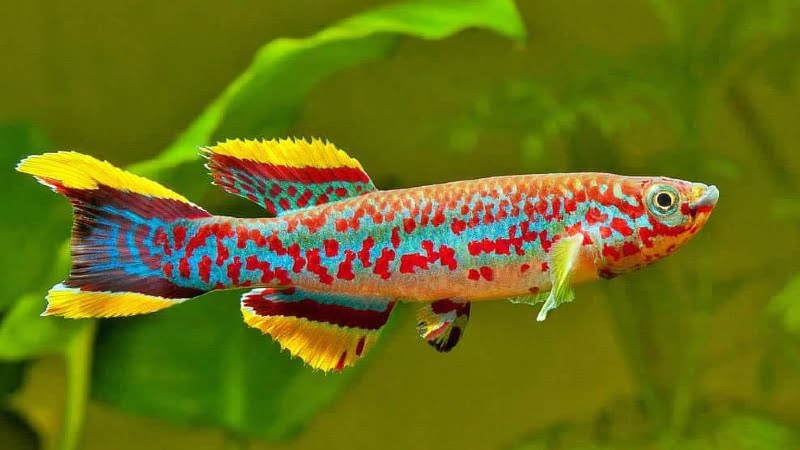Are you a fishkeeper looking to stock your home aquarium with some colorful types of fish? Look no farther than the lovely Gardneri Panchax Killifish (Fundulopanchax Gardneri). The essay below will show you all you need to know about these attractive, including the original, how to care for, breed, and more.
Gardneri Panchax Killifish Overview
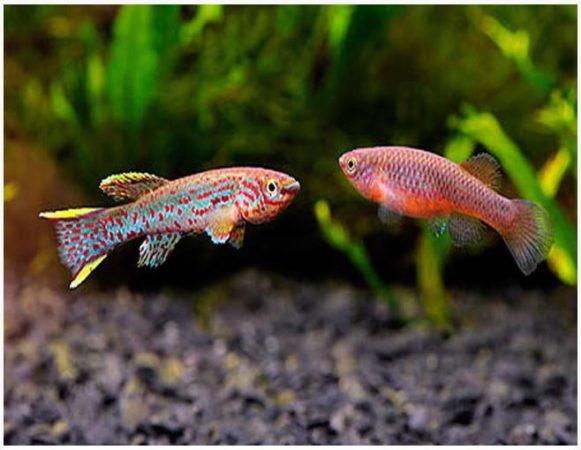
Gardneri Killifish is scientifically classified as a member of the genus Aphyosemion. The fish was found for the first time in 1911 by Belgian naturalist George A. Boulenger. The species is named after the first person to catch and collect one, Mr. R. D. Gardner, who is said to have caught them at Okwoga, a small tributary of the Cross River in Nigeria.
Captive-bred Killifish may be found in waterholes in Africa, as well as streams and marshes. Instead of referring to the fact that this fish is a killer in the aquarium, the name Killy is originated from the Dutch word for ditch or channel.
In the wild, these fish are able to thrive in very tiny water containers. Several are as tiny as the footprint of an elephant. Until the rains fall and fill the hollows and little holes in the earth with water, their eggs might lie latent in the soil. Then, the Killifish begin to develop and survive when their eggs hatch.
Gardneri Killifish, on the other hand, may thrive in a wide range of water types. Additionally, these fish are excellent additions to community aquariums, providing a burst of color and movement. For this species, the males have an eye-catching blue/green color with many red patches running down their body. Anal, caudal, and dorsal fins are yellow-fringed on the tips. Compared to the males, the females are less vibrantly colored, with many little brown patches along the length of their bodies.
This species may grow up to a maximum length of 50-55 mm at its full potential.
Gardneri Panchax Killifish Care
Tank setup
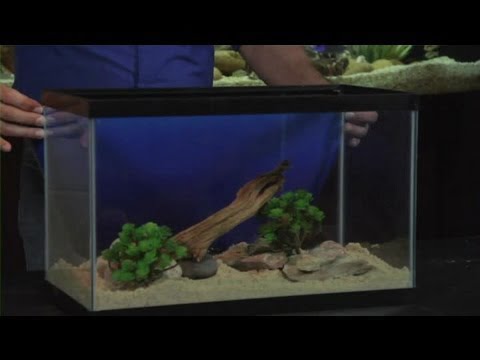
It’s pretty simple to care for Gardneri Killifish, but they have special needs that must be satisfied.
In the first place, although they may be maintained in tiny aquariums, the tank should be at least 10 gallons in total capacity. Also, a filtering system should be installed to ensure that the water is safe to drink. However, it is important to keep an eye on the output of the aquarium filter, since they are sensitive to heavy flow. To reduce the force of the water flow, an outflow baffle may be installed. A sponge filter may be the ideal choice if you want to raise these fish for a long time. The gentle water is also preferred by these creatures.
Because these fish are native to locations with a lot of flora, they should be housed in a tank with a lot of live plants. Besides, natural elements like as pebbles and driftwood may be added to the aquarium to create a more natural aquascape. This will provide the fish a sense of security by providing a large number of hiding places. It is also possible for male Killifish to display aggressive behavior. As a result, the plants and hardscape should be designed to provide as many places to hide as possible for the tank’s inhabitants.
Water condition
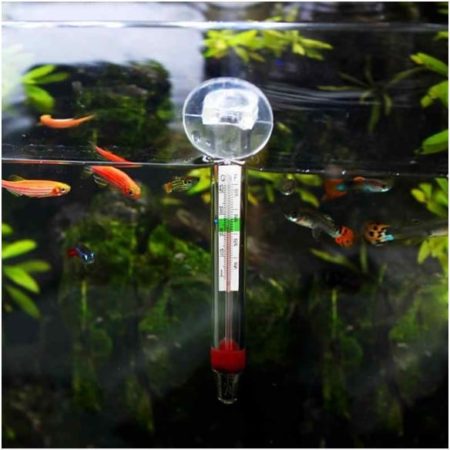
Gardneri Killifish are hardy fish that are able to survive harsh environments in their natural habitat. However, they need a pH of 6.0 – 7.5 with a water temperature between 65 – 75 °F (18 – 24 °C) in an aquarium.
Make it a habit to check your aquarium’s pH level on a frequent basis. If you need, d eionized or reverse osmosis kits may be used to control pH. Also, a dding peat moss or driftwood to your aquarium may also help reduce your fish’s pH level.
Keep an eye on the water temperature and add an aquarium heater if it falls below 65 degrees.
Food & diet
This kind of fish is a natural predator that eats insects and algae in its natural habitat. You may feed them flakes, pellets, and dry food in an aquarium.
Killifish may eat a broad range of different foods in the wild. Aside from tiny insects and crustaceans, these animals may also consume plants and algae that grow in their water holes. In their tank, Killifish should be fed flakes, pellets, and dry foods such as bloodworms on a consistent basis.
Maintaining a steady diet of bloodworms and brine shrimp is OK for Gardneri Killifish; however, you should only feed them once a week. For fussy eaters like Killifish, start by feeding them live food before progressively increasing the amount of dry food they are fed. A few times a day, a tiny quantity is recommended to feed your fish.
Gardneri killifish tank mates
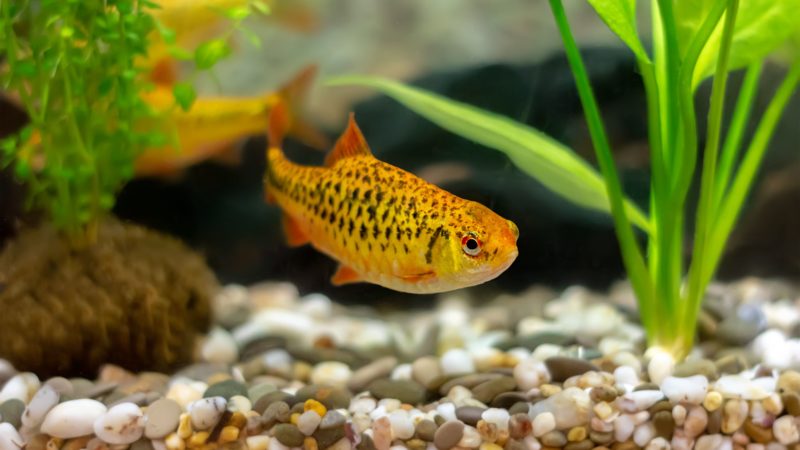
Killifishes of the Gardneri species are generally peaceful fishes and can be kept with other fishes with similar temperaments as well as the smaill size. These fish can also display fin-nipping behavior and show signs of aggression. Therefore, adding other fish to a tank should be done cautiously.
Tank mates that are too brightly colored should be avoided as well if you desire a communal tank. Fish that are brightly colored may be viewed as a threat, and may be attacked by other fish.
Here’s a selection of potential tank mates that you may like having around:
- Tetras
- Barbs
- Danios
- GloFish
- Siamese Algae Eaters
- Corydoras
- Dwarf Gouramis
- Clown Loach
Gardneri Panchax Killifish Breeding
Here’s what we think you should do when it comes to raising these fish.
You will need a 10 gallon tank with a 1 to 2 mm deep soft substrate and some rocks or Bogwood with Java Moss attached to it. Moreover, the addition of floating plants and densely planted foliage on one side of the aquarium will provide additional privacy and protection.
Bright lighting and temperatures between 60 and 70 degrees Fahrenheit are recommended.
Choose a decent pair of fish from your communal tank and add them to your breeding system. For a period of two to three weeks, provide them with protein-rich live food. Then, re-add the pair to the main tank after a few weeks.
From the Java Moss you should begin to see young fry emerge in a few days.
Brine shrimp and bloodworms (Blood Worm) are ideal sources of protein for the fry. Feed your fish three to four times a day until they are large enough to be moved to your main tank or given away to friends, then remove them from the tank.
Video: Easiest Killifish to Breed – Gardneri Panchax Killifish
FAQs
Do Gardneri killifish behave aggressively?
Gardneri It is possible to keep killifish alongside other fish of a similar size and temperament, since they are normally calm. Nevertheless, these fish may engage in aggressive behavior, such as fin-nipping.
Is it difficult to keep Gardneri panchax killifish?
It is not too challenging to keep Gardneri Panchax Fishl. However, raising them do have a few special requirements as I mentioned above. And if you are looking for something a little different, Gardneri killifish is well worth the effort!
What is the lifespan of Gardneri killifish?
The life expectancy of an annual Garderi killifish is 2 years in an aquarium.
What is the hatching time for Gardneri eggs?
It may take up to 30 days for Gardneri eggs (Aphyosemion Gardneri) to hatch, depending on the temperature.

Annette M. Chaney is an experienced marine biologist with over 20 years of experience as an aquarist and fishkeeper. She started her first aquarium at a young age, filling it with frogs and goldfish obtained from the ten-cent pet store.
Annette grew up caring for and breeding African Cichlids, which led to a hobby in high school that doubled as a profitable means. Attending Reed College gave her time to solidify herself as an accomplished aquarium caretaker with an eye for sales. After that, from 2009 – 2013, she studied at Roger Williams University – one of the most prestigious universities for Aquaculture and Aquarium in USA. She is the founder of AquariumCircle since 2010.
